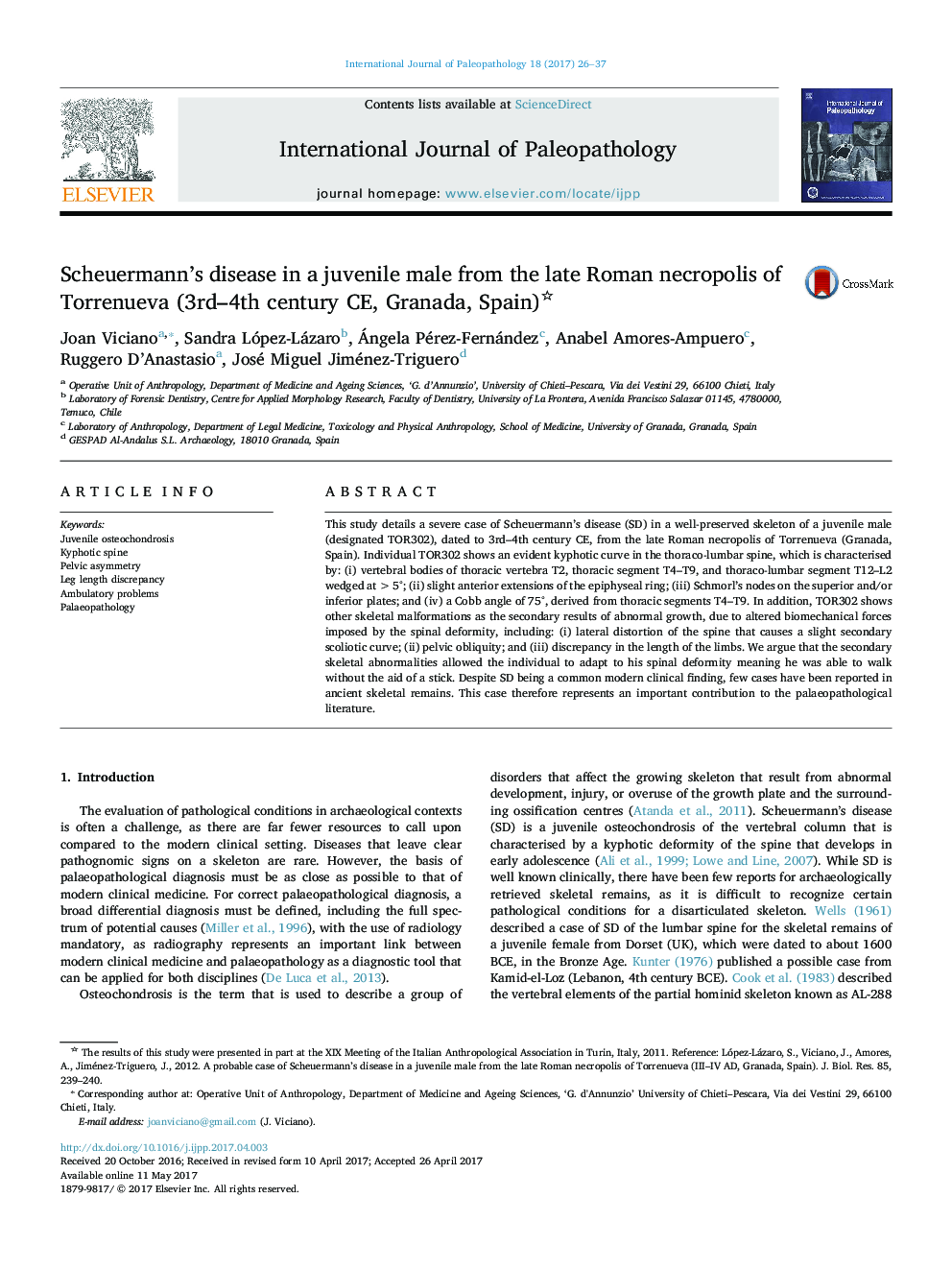| کد مقاله | کد نشریه | سال انتشار | مقاله انگلیسی | نسخه تمام متن |
|---|---|---|---|---|
| 6463040 | 1422373 | 2017 | 12 صفحه PDF | دانلود رایگان |

This study details a severe case of Scheuermann's disease (SD) in a well-preserved skeleton of a juvenile male (designated TOR302), dated to 3rd-4th century CE, from the late Roman necropolis of Torrenueva (Granada, Spain). Individual TOR302 shows an evident kyphotic curve in the thoraco-lumbar spine, which is characterised by: (i) vertebral bodies of thoracic vertebra T2, thoracic segment T4-T9, and thoraco-lumbar segment T12-L2 wedged at >5°; (ii) slight anterior extensions of the epiphyseal ring; (iii) Schmorl's nodes on the superior and/or inferior plates; and (iv) a Cobb angle of 75°, derived from thoracic segments T4-T9. In addition, TOR302 shows other skeletal malformations as the secondary results of abnormal growth, due to altered biomechanical forces imposed by the spinal deformity, including: (i) lateral distortion of the spine that causes a slight secondary scoliotic curve; (ii) pelvic obliquity; and (iii) discrepancy in the length of the limbs. We argue that the secondary skeletal abnormalities allowed the individual to adapt to his spinal deformity meaning he was able to walk without the aid of a stick. Despite SD being a common modern clinical finding, few cases have been reported in ancient skeletal remains. This case therefore represents an important contribution to the palaeopathological literature.
Journal: International Journal of Paleopathology - Volume 18, September 2017, Pages 26-37